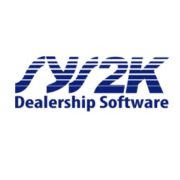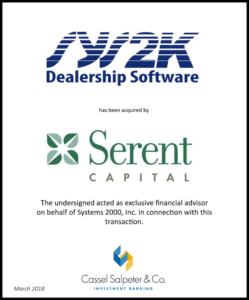How to Help Spot and Minimize Employee Stress
Employee stress is a common problem that harms morale and productivity. These steps can help you identify and manage stress in your company.
By Julie Bawden Davis
April is Stress Awareness Month, and that’s probably a good thing for your business. According to the American Psychological Association’s 2017 Stress in America survey of 3,440 U.S. adults, employee stress is pervasive. Sixty-one percent of Americans are stressed about work.
“Stress is present in many areas of people’s lives, and the workplace is no exception,” says Daniel Clark, CEO of Brain.fm, which produces music to help people focus and sleep better. “Stress distracts employees from getting their jobs done. The distraction can be a few minutes an hour, but compounded over days, weeks and multiple employees, costs employers millions in lost time and productivity.”
Employee stress may very well be at an all-time high thanks to today’s advanced technology, believes James Cassel, chairman and founder of Cassel Salpeter & Co, a midmarket investment banking firm.
“The internet and the assumption it fosters that one should respond immediately is a great stress for many,” says Cassel. “Employees face constant deadlines and expectations to move quickly, many times without the opportunity to really think things through. This can cause substantial friction.”
There is perhaps no greater inhibitor to an employee’s performance than stress, notes Jason Hall, founder and CEO of FiveChannels Marketing. “If employees are stressed, they’re not thinking clearly, their creativity is reduced, and they’re more prone to mistakes, all of which can negatively impact your company.”
Causes of Employee Stress
A variety of factors in the workplace can lead to employee stress. “Unreasonable and unreachable deadlines, toxic coworkers with bad attitudes and poor job fit for a person’s skills are the three most common driving factors I see that cause unnecessary stress,” says Brian McHugh, owner of McHugh Construction
Tash Jefferies is co-founder of Hirekind.io, a company that helps women and people of color find their dream tech jobs. She believes that stress often leads to people leaving their positions. “Stress results when people work long days, experience high job demands (too many tasks and responsibilities) and a lack of a community of peers or executive level support.”
It was a survey of his employees two years ago that alerted Justin Goodman, president of Goodman Insurance Services, to the pervasiveness of stress at his company. “The survey was performed in person by an outside company, and the employees were guaranteed anonymity,” he says. “The results were pretty sobering. Most of our employees explained that their stress came from fear of not performing to company expectations. They also feared that I as the president didn’t understand some of the day – to-day challenges they faced.”
Identifying Employee Stress
Without performing an employee survey or looking at the statistics, how can you spot employee stress? Here are some signs that your workers are heading for anxiety and burnout.
- Confusion. “If you know tasks have been explained thoroughly and clearly and employees show confusion, this is a sign of stress,” says Casey Thomas, co-founder of the Creative Soul Music School . “In my opinion, confusion is the precursor to frustration.”
- Change in behavior or performance. “Any real sudden change of performance and/or behavior is a good indicator that the job is getting to the employee,” says Lior Rachmany, founder and CEO of Dumbo Moving + Storage. “Changes for employers to look out for that indicate stress include lack of focus and attention to detail, taking longer than usual to finish tasks and showing up late to work.”
- Physical clues. “Changes in skin coloring, hair texture, redness of the eyes, consistent nodding off and lack of energy, failure to eat or overeating are common signs of stress,” says Hirekind.io’s Jefferies.
- Mood swings. “Stress can cause people to experience emotional roller coasters more frequently, sometimes on a daily basis,” says Jefferies. “Be on the lookout for crying, anger, frustration, temper tantrums or any other disruptive emotional behavior.”
When an employee who is usually positive and outgoing suddenly seems overwhelmed and negative, suspect stress, according to Mike Grossman, CEO of GoodHire, an employment screening company. “If someone is more withdrawn than usual or displays unusually aggressive behavior, these can also be signs of stress.”
6 Tips to Help Ease Employee Stress
Once you’ve identified that employee stress may be at play and the potential causes, it’s ideal if you can ease the stress so that everyone can have a better work experience. Try the following ideas to help reduce stress.
1. Create an open door policy. “It’s important to foster an environment where employees feel comfortable speaking to their managers about stress-related issues,” says Kareem Bakhr, head of risk management at Selby Jennings, a recruitment company. “There’s often a stigma to admitting feeling overworked or overwhelmed. The first step to successful stress mitigation is establishing an open and accepting platform for people to feel comfortable sharing their challenges without being judged.”
2. Openly discuss the issue. “The best thing leaders can do when they spot employee stress is to bring it to the surface,” says Heather Younger, founder and CEO of Customer Fanatix, LLC, which provides coaching in leadership development and employee engagement. “Let employees vent, if they’re open to it. If they’re not forthcoming, make it clear that you’ve noticed a change in them and that you’re there to help.”
When you discuss the source of stress, you may even find that the employee’s state of mind has nothing to do with the workplace. “Employees have lives outside of work where stressors could be impacting both their home and work life,” says Jonathan Marsh, owner of Home Helpers of Bradenton, which provides in-home care.
3. Make expectations clear. “Prevent unnecessary stress by setting clear expectations about timelines and deadlines and follow up to ensure that the expectations are reasonable and that employees are able to meet those goals with a positive attitude,” says McHugh of McHugh Construction.
4. Provide opportunities to unwind during the workday. “Offer employees an area where they can socialize and decompress during breaks. Sitting at a desk all day alone is not conducive to a relaxing and enjoyable work atmosphere,” suggests Bob Ellis, owner of Bavarian Clockworks, an online shop that sells German cuckoo clocks.
“Find ways to create relaxed environments with an open communication policy and culture,” adds Nick Murphy, host of The Job Lab Podcast. “Whether it’s an employee lounge with beanbags and a Ping-Pong table or frequent team building events that get people away from their screens and out together in a relaxed environment—it’s important to encourage and support time to decompress.”
5. Ensure job fit. “Often, employee stress comes from someone being in the wrong role for the person’s personality type and abilities,” says Michael Maibach, CEO and founder Lab Society, which offers lab supplies and equipment. “It’s not easy finding the right set of tasks to suit each individual in a complex team with a lot of moving parts, but dedicating time to discover how to modify employee roles to better suit their personalities and skill-sets is well worth the effort.”
6. Provide workplace flexibility. “When possible, give employees the flexibility to choose the hours they work and to work from home if needed,” says Shane Green, founder & president of SGEI, a corporate training company.
Being open to giving employees some leeway in their schedules goes a long way toward a less stressful workplace, agrees Chris Padgett, co-founder and CEO of Fusion3 3D Printers. “Allowing workers to start a little later and leave a little earlier or work from home on occasion can have a positive impact on their overall quality of life.”
Click here to view the original article.












